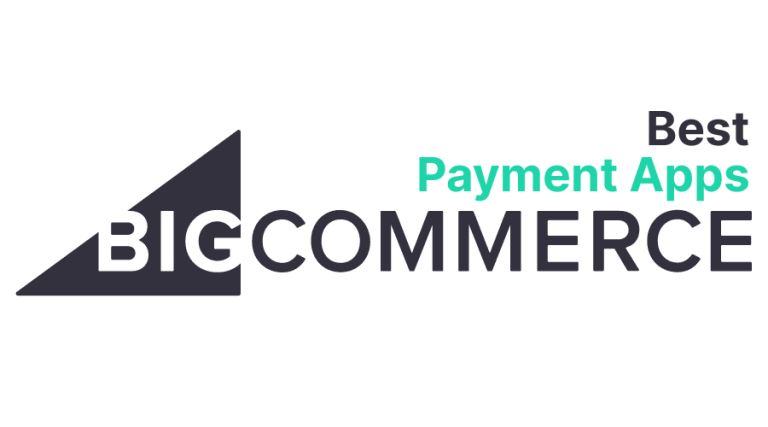
The ecommerce industry has been continually growing and changing over the last few decades, and those changes accelerated with the events of 2020.
In fact, estimated US ecommerce retail sales in Q3 increased by 36.7% from the same time in 2019. As the results of the global pandemic and subsequent changes to customer shopping behavior have unfolded, ecommerce has also gained in total retail market share at a rapid pace.
These changes have invited newcomers to online selling and also changed the game for established businesses. They’re facing a competitive landscape with increasing customer expectations. Successful businesses need the right technology to support their online presence.
If you are new to ecommerce or looking for a new strategy for powering your online shopping cart, you may be considering the different options for platforms. You need it to not only power a slick looking storefront with a seamless customer experience, but also connect to any existing systems you have. You may have other more specific needs as well. For example, if you have a CMS (content management system) already in use on the frontend, you might want your shopping cart software to be able to connect with it as well. Or you may need to make sure it can sell on social media if that’s where your audience is. And you will likely want it to be SEO friendly to help reach a new audience.
As you search for the technology that can meet these needs and any other you might have, you will find the options are vast. To help you narrow the field, one of the first decisions to make is: do you want an open source ecommerce platform or SaaS platform.
In this article, we’re helping you make that decision by diving into SaaS vs open source ecommerce solutions. We’ll cover what the two options mean, what the pros and cons are to each and some of the best open source ecommerce platforms and SaaS ecommerce platforms you might want to consider.
Main Differences Between Open Source and SaaS
When you read about the difference between open source and SaaS, you will often see it framed as: do you want to own or rent? Let’s dig into this metaphor and what the practical differences are between these two types of platforms.
1. What is Open Source ecommerce?
Open source software means that the user has complete access to the source code. This means that anyone can adapt and customize the platform to meet their business needs. Although by “anyone,” we really mean anyone with developer resources. Open source platforms are powerful and customizable, but also very complex. Changes are best handled by certified developers. Open source software is often developed in a collaborative way, and there are often communities built around development related to individual platforms. A user might choose an open source platform because they require extreme customization; with open source if a feature doesn’t exist, it can be built by altering the code. To use our metaphor above, open source is like owning a house. You can download it and knock out the walls and add in a finished basement if you want, so long as you have the money to spend on contractors.
2. What is SaaS ecommerce?
SaaS (or Software-as-a-Service) is a different delivery model in which the software is licensed on a subscription basis. Like renting a house, you pay a fee (often monthly) for as long you want to use the platform. SaaS platforms aren’t bought or downloaded by the user, but are instead hosted by the SaaS provider. The provider then does the work of securing, maintaining, and hosting the platform on their own servers, much as a landlord would handle a rental property’s upkeep. With a SaaS platform, the customer doesn’t have access to and can’t alter the source code, just as you can’t decide to add a second floor to your rented bungalow. SaaS platforms are a good option for ecommerce store owners that don’t want to devote time, energy and resources to maintenance.
Total Cost of Ownership: Open Sources vs SaaS
The cost to build and operate your business is always going to be a big factor in the choices you make around your platform. You need a platform that can both support the site you need it to and do it for the price that works with your budget.
1. Open source ecommerce software.
The ethos of open source ecommerce software is that it be open to anyone to modify the source code. Many open source platforms have a free version. Thus, open source software is sometimes free to download and use. However, actually using the software to create a viable ecommerce website does have some costs associated with it.
- Licensing fees: Not all open source software is free. For example, Magento has both an open source version and a licensed Magento Commerce version that requires the user to pay licensing fees. Pricing for Magento Commerce (on prem) starts at $22,000, while Magento Commerce Cloud (which includes hosting) starts around $40,000. Not all open source platforms have a free and paid version, though.
- Hosting provider fees: The cost difference between the on premise and cloud versions of Magento above draw attention to another cost of open source software: hosting. If you download the software yourself, you need to find a way to host it. That can be done by paying a third-party provider, hosting on your own servers or paying the platform provider to handle hosting. Usage and traffic spikes can impact pricing. When choosing a third-party provider to handle hosting, make sure to find that one meets your needs for traffic volume and potential spikes. The cheapest option may lead to more costs in lost business if your site experiences outages at key times.
- Web developer or agency fees: Your site is not going to build and design itself. Open source can be great for achieving the exact customization you need, but it’s also very complex. You will need developer and design resources — whether those resources are internal or from external agencies — to help you achieve the site you’re looking for. These costs can be steep, depending on your needs. For example, building an enterprise-level store on Magento Commerce can easily cost six figures with costs that scale with the complexity of the build, design, extensions and additional integrations required.
- Additional costs to fix bugs and install patches and software updatesAfter you’ve built your store, you will still need developer resources to help you maintain it. You will need to install security patches and updates to make sure you have a secure platform. This is true even if the platform includes hosting. By using open source software, the onus is on the merchant to install updates and security patches.
- Security and PCI compliance costs: Open source platforms will by and large not come with PCI compliance. You can still be PCI compliant on an open source platform, but the responsibility falls on the merchant. PCI Compliance standards must be met to accept payments or you risk being charged fines, termination of ability to accept payments, loss of customer confidence and other fraud-related financial consequences. Magento Open Source does not have PCI compliance, although Magento Commerce does, so long as no changes are made.Customers are responsible for ensuring that their WooCommerce stores are PCI-compliant.
- Apps or extensions: Your platform will likely be the foundation of your tech stack, but not the sole part. You will likely use other software and apps to get the full functionality and features you need. Consider the cost of your total tech stack, not just your open source platform.
- Integration into other systems: You will need to integrate your platform with the extensions mentioned above (or be custom built), which will take additional development resources. You will need to make sure systems like your OMS or ERP can share data with your ecommerce platform.
2. SaaS ecommerce.
Unlike open source, with SaaS, there is a subscription fee attached to using the software. This fee includes the use of the software, hosting, automatic updates that give you immediate access to new features and no-hassle security patching. SaaS platforms like BigCommerce tend to have a lower total cost of ownership than open source platforms like Magento. Additionally, you may be better able to estimate your total operating costs because so many of them are included in the regular monthly fee. However, keep in mind you will still have the following costs to consider.
- Agency fees, if used: Much like with an open source website, you may choose design and development resources to get the look, feel and functionality you’re going for. This can be achieved through internal teams or external agencies.
- Apps or extensions: To get all of the features you need, you will likely need to extend the platform. This is where the choice of which SaaS platform can make a big difference. Make sure to choose one that has many of the built-in features you need to avoid too many add-on costs. For example, the out-of-the-box functionality of BigCommerce can save merchants roughly $5,800 – $30,000+ per year in app subscription costs, compared to Shopify.
- Any integrations into other systems: As with open source software, you will need to consider how you will integrate the platform with your other systems.
Pros and Cons of Open Source and SaaS Ecommerce
There is no one ecommerce platform that is right for every business. The choice between open source and SaaS — and from there the choice between the myriad of options that fall into these two categories — will depend on your budget and specific business needs and challenges. Consider the advantages and disadvantages of each before deciding which might be the best fit for your business.
Open Source Ecommerce Advantages and Disadvantages
Open source solutions have some big selling points. Who wouldn’t want the ultimate power of customization? But it also has some major drawbacks that might make the price of admission too steep.
1. Advantages of open source.
Here are the two biggest pros that open source software can offer:
-
Complete control
The biggest pro to open source software is the flexibility it provides. You have control over the source code. If you’re looking to make big changes and have very niche needs, open source might be the way to get what you need. You’re limited only by your imagination and the abilities of your team of developers.
-
Widespread community support
Open source platforms are built and monitored by the community that forms around them. Developers that specialize in the platform contribute ideas and additions that you can take advantage of. You can visit blogs, community forums related to the platform and Github to plug into the knowledge base around your platform. It’s important to note that how much community support you get will probably vary depending on if you have paid or free licensing.
2. Disadvantages to open source ecommerce.
With great power, comes great responsibility. Here are the downsides of open source:
The more you modify the source code, the more complex you make your system. This can mean it’s more expensive and difficult to make updates. You may find the software itself has a bit of a learning curve.
-
Heavy maintenance
Not only are open source platforms costly and complex to set up, but they also require a lot of maintenance to keep them up and running correctly. You will need a developer, an in-house IT team and/or an agency to manage this maintenance. This can make it harder to make quick changes to the site to stay current because your marketing team will need developer support to make updates.
We talked about the costs of open source ecommerce above, so we won’t belabor the point too much here, but suffice is to say open source platforms come with a laundry list of costs to consider. Do the math to determine if both the initial build costs and operating costs will work out in your favor long term.
-
Security vulnerabilities
The source code for open source software is open to anyone to download and modify. That’s both a plus for the community of developers who work to make it better…and also a minus when it comes to the bad actors who look for vulnerabilities to exploit. Ecommerce sites are treasure troves of financial data, so hackers are always looking for a way in, making security breaches a real concern. Your open source platform may provide patches for known issues, but it is on your team to be proactive about installing them.
3. When to use open source ecommerce?
So do the pros outweigh the cons? That depends on your business. If your business has a big budget to handle the associated tech debt from setting up and maintaining the open source infrastructure and your business needs are extremely complex, open source may be the best option for you.
Open Source Ecommerce Platforms
If you’re leaning towards open source, you still have a lot of choices to make. Here are some of the major open source players in the market today.
1. Magento.
You can’t write about open source ecommerce platforms without talking about Magento. This open source platform is written in PHP and currently powers over 200,000 live websites. Now owned by Adobe, Magento has three distinct versions: Magento Open Source (formerly Magento Community Edition), Magento Commerce (formerly Magento Enterprise Edition) and Magento Commerce Cloud which is like Magento Commerce but with cloud-hosting included. Magento Open Source is free to download but doesn’t offer the same advanced features and ticket-based support of Magento Commerce or Magento Commerce Cloud.
2. WooCommerce.
WooCommerce is a free, open-source plugin that can be added to a WordPress site to give it backend ecommerce functionality. Also written in PHP, and over 4.4 million sites use WooCommerce. WooCommerce may be a good choice if you’re looking to quickly monetize an existing WordPress site; however, it may be difficult to scale as adding additional payment, catalog management, and marketing features becomes costly and time consuming on WooCommerce.
3. PrestaShop.
PrestaShop is another open-source platform that is free, but you can pay for add-ons and plug-ins to make it work for your business. PrestaShop is written in the PHP programming language with support for the MySQL database management system. PrestaShop currently supports 300,000 merchants globally.
4. Shopware.
Shopware is an open-source platform under the MIT license. It is written in the PHP programming language. ShopWare powers 80,000 websites, focusing on many brands in Europe.
5. OpenCart.
OpenCart is another PHP-based, open source online store management system. It uses a MySQL database and HTML components and is freely available under the GNU General Public License. There are approximately 400,000 live websites using OpenCart. OpenCart is free to download and use but you can pay for additional themes, plug-ins and dedicated support.
These are just a few of the plethora of open source ecommerce platforms available. Other options you may want to consider for your online business include: Drupal Commerce (a digital experience platform with commerce functionality); Joomla (a content management system and website builder that can achieve ecommerce through an add-on); OsCommerce; Zen Cart; Virtuemart and Spree Commerce.
Advantages and Disadvantages to SaaS: Software-as-a-Service
If, as suggested in the introduction, we think of SaaS as like renting a house, then the pros and cons are fairly similar. You trade the freedom of knocking out walls and doing a complete overhaul. And in turn you get the more reliable monthly outlay and can rest secure in the knowledge that if the plumbing breaks, it’s not your problem.
If, as suggested in the introduction, we think of SaaS as like renting a house, then the pros and cons are fairly similar. You trade the freedom of knocking out walls and doing a complete overhaul. And in turn you get the more reliable monthly outlay and can rest secure in the knowledge that if the plumbing breaks, it’s not your problem.
1. Advantages of SaaS.
Here are some of the reasons SaaS solutions might be the right choice.
-
Fast set-up
SaaS platforms can help brands get to market quickly. However, some SaaS platforms have more included functionality than others, so if speed of launch is a priority, make sure to choose the platform that can manage that. They also typically have user-friendly interfaces and pre-built themes that can get you up and running at speed.
-
Ease of use
Not only are SaaS platforms often easier to implement, they are also user friendly and simple to maintain. You don’t have to make your own software updates or deal with hosting challenges yourself.
-
Security
Maintaining security is incredibly important for ecommerce sites to keep the credit card and personal data of customers safe. SaaS platforms not only provide security patches to solve vulnerabilities, but they also apply them for you, so it’s one less thing to worry about. Most SaaS platforms will also provide PCI compliance, so it’s a lot easier for the merchant to manage.
-
Scalability
There are many pros to modern SaaS that extend far beyond our housing analogy above. A rental house (or any house) is a finite thing, but your SaaS platform can grow and scale with your business growth. Functionality can be added with new apps; SaaS platforms generally include unlimited bandwidth; and you can add new sales channels (like selling on Instagram or Amazon) when you need them.
-
Customer support
While open source ecommerce platforms have a strong community, many SaaS platforms do too. But for those who want more direct, dedicated support you need to spring for either the managed version of the open source platform or go with SaaS. SaaS platforms generally include support as part of the package. For example, BigCommerce offers 24/7, US-based support and most merchants are connected to a live support specialist in under two minutes.
2. Disadvantages to SaaS.
The main difference between SaaS and open source is that with SaaS you won’t have complete control. Not all SaaS platforms are created equal, so to avoid these disadvantages, you need to pick the right one.
-
Customization
Although you can’t alter the source code of a SaaS platform, some SaaS platforms still provide openness through APIs that can give you much of the customization potential of open source. Other SaaS platforms do not. If flexibility and creating an innovative customer experience is important to your business, make sure the platform you choose — whether that’s open source of SaaS — can get you where you need to go.
-
Lack of Choice
Some SaaS platforms can lock you into using certain apps or features and make it hard for you to choose the ecommerce solutions that work best for your business. For example, Shopify has a proprietary payment provider. They charge additional transaction fees up to 2% of each sale for using other payment gateways and you lose access to certain features like multi-currency. If having freedom of choice is important to your ecommerce business, you will need to choose a SaaS platform that is open to and integrates easily with the solutions you want.
3. When to use SaaS?
SaaS is a good choice for businesses of all sizes who want to focus their resources on building their businesses and not on infrastructure, maintenance and security. SaaS can support B2C, B2B and hybrid businesses across industries, even those with specific business needs requiring some customization.
SaaS Ecommerce Platforms
Does SaaS sound like the right fit for your business? If so, read on to learn about some of the major SaaS platforms in the business.
1. BigCommerce.
BigCommerce is one of the leading Open SaaS ecommerce platforms for mid-market and enterprise brands. It has all the benefits associated with multi-tenant SaaS — ease of use, high-performance, and continuous updates — coupled with platform-wide APIs that enable businesses to customize their sites and integrate with external applications and services. The platform’s drag-and-drop PageBuilder makes it user friendly to edit without coding. Tens of thousands of B2B and B2C companies across 150 countries and numerous industries use BigCommerce to create beautiful, engaging online stores.
2. Shopify.
Shopify is another popular choice, especially for small businesses and those new to ecommerce. The platform offers a number of themes and can make it easy to get a simple store off the ground quickly. There are over one million merchants using the platform. Those with large catalogs may want to avoid it, as Shopify and Shopify Plus (the Enterprise version) both have a strict option and variant caps per product. By comparison, BigCommerce is built for big catalogs. You can add up to 600 SKUs per product compared to the 100 SKUs per product cap of Shopify and Shopify Plus.
3. Salesforce Commerce Cloud.
Salesforce Commerce Cloud, formerly Demandware, is a highly-scalable SaaS option used by big brands with big budgets. An implementation can easily cost $250K+ on Salesforce Commerce Cloud. Salesforce Commerce Cloud provides a suite of related services that can complement the ecommerce offering. However, merchants face additional obstacles and costs if they choose a third-party over Salesforce’s add-on services.
Making the Final Decision: Open Source Ecommerce or SaaS Ecommerce?
Deciding between open source or SaaS ecommerce is a big decision. You want to choose the right all-in-one platform now — and one that will grow with you — so you don’t have to make a risky migration later. Comparing the two options, side-by-side only works when you consider your individual business needs, budget and resources.
SaaS may well be able to provide the customization you need without requiring open source, but as we’ve said, not all SaaS is created equal. Learn more about Open SaaS and what it can do in this ebook.






